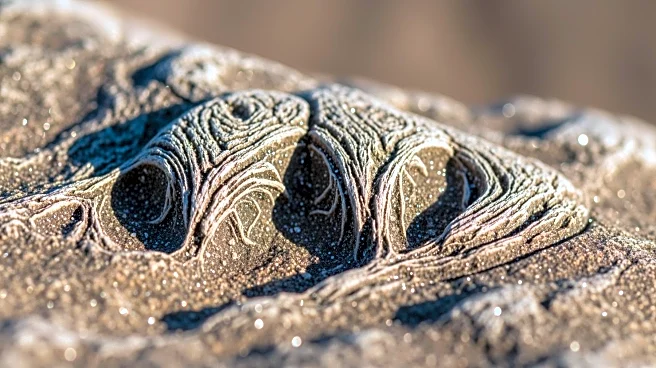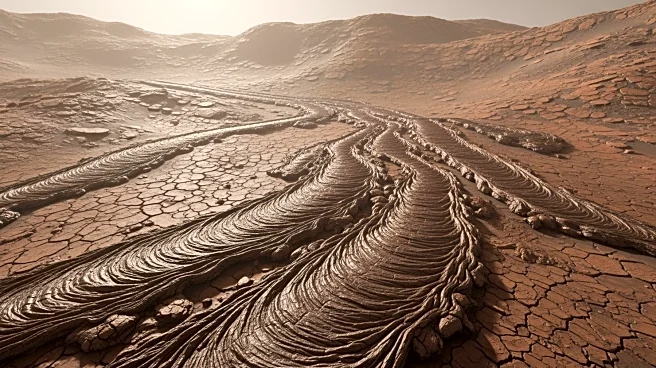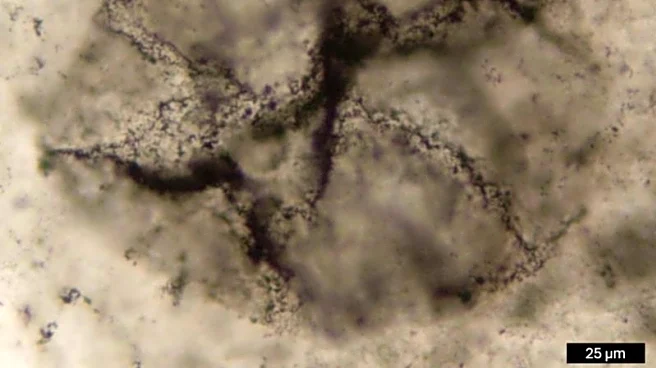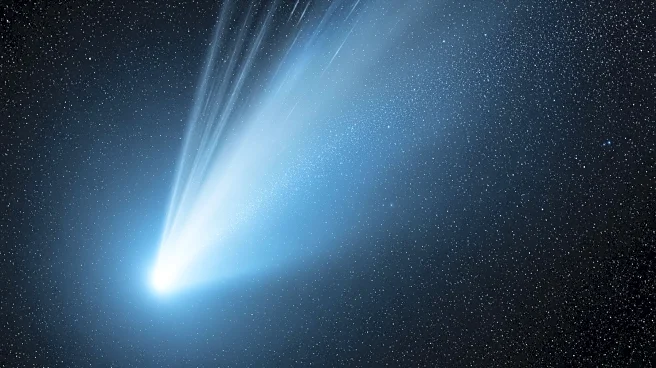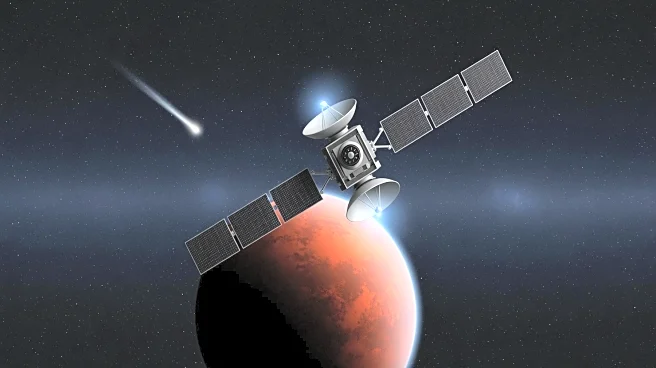What's Happening?
A recent study published in Nature Geoscience by Rutgers geodynamicist Yoshinori Miyazaki and collaborators has unveiled new insights into two mysterious structures within Earth's mantle. These structures,
known as large low-shear-velocity provinces and ultra-low-velocity zones, are located at the boundary between Earth's mantle and core, approximately 1,800 miles beneath the surface. The study suggests that these structures are remnants of a 'basal magma ocean' contaminated by core material, which may have influenced Earth's ability to support life. The research integrates seismic data, mineral physics, and geodynamic modeling to propose that elements such as silicon and magnesium leaked from the core into the mantle, preventing strong chemical layering and contributing to Earth's unique evolution.
Why It's Important?
Understanding these deep Earth structures is crucial for comprehending Earth's formative processes and its habitability. The study's findings could explain why Earth has oceans and life, while Venus and Mars have vastly different atmospheres and conditions. The core-mantle interactions may have influenced volcanic activity, atmospheric evolution, and Earth's cooling processes. This research opens new avenues for exploring Earth's early history and its unique evolution compared to other planets. The implications extend beyond deep-Earth chemistry, potentially offering insights into planetary science and the conditions necessary for life.


